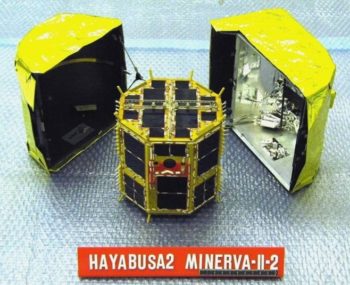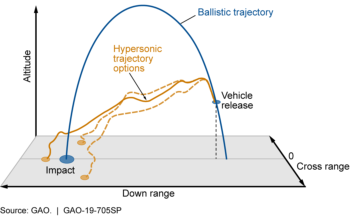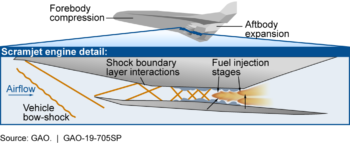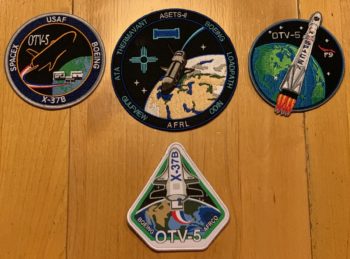Archive for September, 2019
NASA is developing a trio of systems to put astronauts into space—the Orion crew vehicle, Space Launch System, and Exploration Ground Systems. NASA will need these systems for its human space exploration goals, including sending astronauts to the Moon as soon as 2024.
How is NASA managing these large and complex efforts? Past reports have noted that schedules were overly optimistic and that NASA’s reporting of cost growth for SLS and Orion is distorted.
For the latest developments, go to this House Hearing: Developing Core Capabilities for Deep Space Exploration: An Update on NASA’s SLS, Orion, and Exploration Ground Systems.
This hearing was staged by the House Space & Aeronautics Subcommittee on September 18, 2019.
Witness testimony:
- Kenneth Bowersox, NASA Acting Associate Administrator for Human Exploration and Operations
- Cristina Chaplain, Director, Contracting and National Security Acquisitions, U.S. Government Accountability Office
- Doug Cooke, Owner, Cooke Concepts and Solutions; Former Associate Administrator, Exploration Systems, NASA
Other resources
Also go to Rep. Frank Lucas’ Statement at Space Subcommittee Hearing on NASA’s SLS and Orion Programs at:
For the opening Statement of Rep. Brian Babin, go to:
For a video of the entire hearing, go to:
NASA’s Lunar Reconnaissance Orbiter (LRO) has reportedly failed to spot India’s failed Chandrayaan-2 lunar lander.
Mark Carreau of Aerospace Daily & Defense Report says LRO’s Lunar Reconnaissance Orbiter Camera (LROC) on Sept. 17 imaged the intended lunar south pole landing site for India’s Chandrayaan-2 Vikram lander, “but long shadows in the area may be obscuring the silent lunar explorer.”
“It was near dusk as the region prepares to transition from a two-week lunar day to and equally long lunar night, so shadows covered much of the region and Vikram may not be in the LROC’s field of view,” citing a NASA statement.

India’s targeted site for Chandrayaan-2’s Vikram lander. Photo taken of area prior to landing attempt by NASA Lunar Reconnaissance Orbiter’s LROC camera.
Credit: NASA/GSFC/Arizona State University
Data sharing
In a statement provided to Inside Outer Space by Mark Robinson, LROC’s lead investigator at Arizona State University: “Per NASA policy, all LRO data are publicly available. NASA will share any before and after flyover imagery of the area around the targeted Chandrayaan-2 Vikram Lander landing site to support analysis by the Indian Space Research Organization.”
The statement also noted that on the September 17th LRO flyover of the area, local lunar time will be near dusk, “leading to poor lighting and a challenging imaging environment.”
NASA’s Curiosity Mars rover is closing out Sol 2529 duties.
The Mars robot has scored its 23rd drill hole on Mars, reports Mark Salvatore, a planetary geologist at the University of Michigan. “Coming in at roughly 43 millimeters depth…and both the rover and new drill hole are happy and healthy!”
Salvatore noted that Curiosity drilled into the same block as a previous drill target over the weekend, reaching full drill depth with only a little percussion needed.
“The new drill hole is named, you guessed it, Glen Etive 2!”

Curiosity Mastcam Left p;hoto acquired on Sol 2528, September 16, 2019.
Credit: NASA/JPL-Caltech/MSSS
Drill hole, tailings
“Following the successful drilling this weekend,” Salvatore adds, “Curiosity spent lots of time documenting the new hole so that the science team could get to work on Monday morning with plans to characterize it. We’ll be planning all of the standard chemistry measurements of the drill hole and drill tailings starting on Wednesday.”
But first, Mars scientists plan to calibrate the Chemistry and Camera (ChemCam) instrument to prepare for all of this upcoming work.
Calibration activities
Salvatore points out that on Sol 2529, Curiosity was to calibrate its laser-induced breakdown spectrometer by measuring its titanium calibration target.
Then, on Sol 2530, the Mars robot will measure the imaging capabilities of the instrument by taking measurements of other calibration targets onboard the rover.
“These calibration activities take place every few weeks to make sure that the instruments are operating correctly and the data are as accurate as possible,” Salvatore explains. “By the time our chemistry measurements make it into Wednesday’s plan, we can be confident that ChemCam will continue to provide the fantastic data that it has been for the past seven years!”
Japan’s Hayabusa2 asteroid explorer is soon to dispatch a new robot onto space rock of ages, Ryugu.
The spacecraft is slated to unload the roughly 2.2 pounds (one kilogram) Minerva-II2 next month – a device equipped with a camera, thermometer, photodiode, and accelerometer.
Minerva is short for MIcro-Nano Experimental Robot Vehicle for Asteroid.
This mobile robot was fabricated by a university consortium led by Tohoku University, co-developed with Tokyo Denki University, Osaka University, Yamagata University, and the Tokyo University of Science.
Hop and move
The MINERVA-II2 (Rover-2) exploration robot is designed to use various mobility techniques to hop and move across the asteroid’s surface.
On launch back in early December 2014, Hayabusa2 was outfitted with four rovers: the Mobile Asteroid Surface Scout (MASCOT), Rover-1A, Rover-1B, and Rover-2. Since its rendezvous with asteroid Ryugu in June 2018, the spacecraft has successfully deployed all but Rover-2, still mounted in a container onboard the Japanese asteroid probe.
Target markers
As prelude to the release of Rover-2 in October, two target markers have already been dispatched to the asteroid. This target marker activity on September 17 served as a rehearsal for the separation operation of the Minerva-II2 Rover-2.
If all continues to go as planned, Hayabusa2 is slated for departure from the asteroid at year’s end, headed for return to Earth of asteroid specimens the pioneering probe has gathered at the end of 2020.
This spacecraft mission is under the direction of the Japan Aerospace Exploration Agency (JAXA).
NASA’s Curiosity Mars rover is now performing Sol 2529 duties.
Reports Vivian Sun, a planetary geologist at NASA’s Jet Propulsion Laboratory, it’s go for drilling at Glen Etive 2.

Curiosity Front Hazcam Right B image acquired on Sol 2528, September 16, 2019.
Credit: NASA/JPL-Caltech
“After studying the results from the ‘Glen Etive 1’ drill hole over conjunction, the team has decided to proceed with a second drill hole at a nearby location, dubbed “Glen Etive 2,” on the same rock slab,” Sun adds.
Rock composition
This second drill will allow scientists to do a more detailed set of Sample Analysis at Mars (SAM) Instrument Suite and Chemistry & Mineralogy X-Ray Diffraction/X-Ray Fluorescence Instrument (CheMin) analyses to better understand the composition of this rock.

Curiosity Front Hazcam Left B image acquired on Sol 2527, September 15, 2019.
Credit: NASA/JPL-Caltech
“We kicked off the drilling campaign for Glen Etive 2 with a series of activities on Sols 2525 through 2528. On Sol 2525, we commenced with initial triaging of the Glen Etive 2 target, which included a preload test to help determine if the rock surface will be stable for drilling,” Sun explains.
Pebbly materials
To continue wrapping up observations from the first drill campaign, scientists also planned Alpha Particle X-Ray Spectrometer (APXS) observations over two pebbly areas near where the Glen Etive 1 sample was dumped.
“The APXS measurement of the Glen Etive 1 dump pile,” Sun points out, “included some pebbly materials in the field-of-view, so these extra measurements will help us tease out the true composition of the sample fines.”

The Curiosity science team has decided to proceed with a second drill hole at a nearby location, dubbed “Glen Etive 2,” on the same rock slab. NASA’s Mars rover Curiosity acquired this image using its Mars Hand Lens Imager (MAHLI) on Sol 2525
Credit: NASA/JPL-Caltech/MSSS
Pre-drill imaging
A Sol 2525 preload test was successful, so Mars researchers moved forward with the full drill activity on Glen Etive 2 in the Sol 2526-2528 plan.
“This includes the requisite pre-drill imaging, as well as SAM and CheMin activities to prepare for ingestion and analyses of the Glen Etive 2 sample next week,” Sun reports.
Other rover activities included Mastcam multispectral documentation of both the Glen Etive 1 and future Glen Etive 2 drill holes, ChemCam observations of the Glen Etive 1 drill tailings and dump pile, and a suite of atmospheric monitoring observations.
Also planned were several activities focused on monitoring and maintaining Curiosity instruments, including Mars Hand Lens Imager (MAHLI) imaging of the Rover Environmental Monitoring Station (REMS) ultra-violet sensor and Mastcam imaging of the MAHLI magnet.
“Getting all of these activities into this packed weekend plan was quite the effort, but well worth it to get our next drill sample,” Sun concludes. “We can’t wait to see the results!”
The U.S. Government Accountability Office (GAO) has issued a Science & Tech Spotlight on hypersonic weapons.
As the GAO spotlight notes, hypersonic weapons, once developed, would fly faster than 3,800 mph and be extremely difficult to defend against.
“Advances in hypersonic technologies have significant implications for national security, as well as for transportation and space systems,” the GAO reports. “Research and development of offensive and defensive capabilities in hypersonics is and will remain critically important.”
Hypersonic weapon want-to-haves
Along with CRS staff inputs, the spotlight has been reviewed by Timothy Persons, Chief Scientist of the GAO, pointing out that hypersonic weapons are expected to:
- Fly at least 3,800 mph (about 5 times the speed of sound)
- Fly at lower altitudes than ballistic missiles
- Be highly maneuverable
- Be able to change targets during flight
- Be extremely difficult to defend against
But what are the implications of the commercialization of hypersonic technologies and vehicles?
Go to this GAO appraisal at:
NASA’s Curiosity Mars rover is now wrapping up Sol 2527 duties.
The Red Planet machinery has returned to operations after standing down during the recent opposition from August 28 to September 7, 2019 – a period when Mars is on the opposite side of the Sun from Earth and curtails communications between Earth and the Red Planet.

Curiosity ChemCam Remote Micro-Imager photo acquired on Sol 2526, September 14, 2019.
Credit: NASA/JPL-Caltech/LANL
Reports Lucy Thompson, a planetary geologist at University of New Brunswick, the current focus of Curiosity’s activities is to finish up the analyses associated with the drilling campaign at “Glen Etive 1.”
Chemistry, color and texture
Recently, dump drill fines from the drill bit assembly (DBA) and the analyses of those fines have been done with the rover’s Alpha Particle X-Ray Spectrometer (APXS) (for chemistry) and the Mars Hand Lens Imager (MAHLI) (for close up color and texture), as well as obtaining MAHLI images of the drill hole and associated fines surrounding the hole (tailings). The hole is roughly 1.6 centimeters in diameter.
“The MAHLI images of the drill tailings allowed us to choose the best location on the tailings to analyze with APXS,” Thompson notes. “We are interested in comparing the chemistry of the tailings, versus the DBA fines, versus the brushed surface prior to drilling to look for variations in composition with depth. We may have intersected different layers during drilling; the tailings are typically derived from the top 2 centimeters of the drill hole, while the DBA fines are derived from the lower several centimeters.”

Curiosity Mars Hand Lens Imager (MAHLI) photo produced on Sol 2524, September 12, 2019. MAHLI is located on the turret at the end of the rover’s robotic arm.
Credit: NASA/JPL-Caltech/MSSS

Curiosity Mars Hand Lens Imager (MAHLI) photo produced on Sol 2524, September 12, 2019.
Credit: NASA/JPL-Caltech/MSSS
Down the hole
Additional MAHLI imaging of the drill hole was also planned, including angled night time imaging down the hole to look for any obvious layering or veins, Thompson adds.
“The team is looking forward to wrapping up here at Glen Etive 1,” Thompson concludes, and drilling another hole close by to enable a more detailed study of this material with the internal rover laboratory instruments, the Chemistry & Mineralogy X-Ray Diffraction/X-Ray Fluorescence Instrument (CheMin) and the Sample Analysis at Mars (SAM) Instrument Suite.
Aliens of all stripes are zeroing in on the secretive Area 51 next week.
Area 51 is the hush-hush U.S. Air Force military installation located at Groom Lake in southern Nevada.
The installation has been the focus of numerous conspiracies involving the base’s extraterrestrial connection – a locale for captured flying saucers and surely an alien holding site.
The target dates of September 20-22 will see several activities, including “Storm Area 51, They Can’t Stop All of Us.”
Mecca for believers
The town of Rachel is an unincorporated portion of Lincoln County, Nevada. As the closest habitation to the Nellis Air Force Range and Area 51, the area has become a Mecca for inquisitive UFO believers.
The town is roughly three hours drive north of Las Vegas along Nevada Highway 375, also called the “Extraterrestrial Highway.” Rachel is home base for Little A’Le’Inn that has been selling tickets for “ALIENSTOCK.”
Be forewarned: There is no gas available in Rachel. Incoming alien hunters are urged to fill their tank in Alamo/Ash Springs from the east or Tonopah from the west.
Getting heavy with Bud Light
Meanwhile, instead of storming a secretive government base, the Downtown Las Vegas Events Center is partnering with Collective Zoo and Bud Light to host an evening of top-secret entertainment on Thursday, September 19 with the Area 51 Celebration.
“The time has come to sit back, share a beer, and talk all things aliens,” exclaims the associated website. “Come in peace, we have everything you need to make this celebration a blowout, including a classified lineup of music artists specially curated by Collective Zoo.”
Matty Roberts, the man behind the virtual “Storm Area 51” movement has been abducted to host the alien-themed event in downtown Las Vegas.
Gate-crashing no-no
Overall, there’s no telling how many are truly expected to populate the Area 51 festivities. As of this posting, it remains unclear what events may have been cancelled or are still planned in light of an alien free-for-all, even legal fights over events.
In the meantime, for those wishing to storm a highly-classified military base, UFO devotees are being warned that any gate-crashing is a no-no and will be deterred.
For more information, go to
Little A’Le’Inn at:
Storm Area 51 at:
https://www.stormarea51.us/?fbclid=IwAR20JzL7H_z5vSpBUbvsDS4revBE0Oa1NnoHguAB07BMy8wNBeVXndN1bmE
For the official anthem for the raid event by Finderz Keeperz, go to:
https://soundcloud.com/finderzkeeperz/theycantstopusall
For the Area 51 Celebration at the Downtown Las Vegas Events Center, go to:
https://dlvec.com/event/area-51-celebration/
Lastly, go to these informative videos at:
The classified U.S. Air Force X-37B space plane program has winged its way to a new milestone in its hush-hush current flight – winging past two years in Earth orbit.
Also tagged as the Orbital Test Vehicle (OTV) – 5 mission, this currently orbiting space plane was rocketed into low Earth orbit back on September 7, 2017 – speeding around the planet now for over 730 days.
The now-orbiting, Boeing-built OTV-5 spacecraft, was lofted skyward atop a SpaceX Falcon 9 booster from Launch Complex 39A at NASA’s Kennedy Space Center in Florida.
Milestone setting
Each X-37B/OTV mission has set a new flight-duration record for the program:
OTV-1 began April 22, 2010, and concluded on Dec. 3, 2010, after 224 days in orbit.
OTV-2 began March 5, 2011, and concluded on June 16, 2012, after 468 days on orbit.
OTV-3 chalked up nearly 675 days in orbit before finally coming down on Oct. 17, 2014.
OTV-4 flew for nearly 718 days during its mission, extending the total number of days spent in space for the OTV program at that point to 2,085 days. It was launched in May 2015 and landed in May 2017.

The X-37B Orbital Test Vehicle mission 4 (OTV-4), the Air Force’s unmanned, reusable space plane, landed at NASA’s Kennedy Space Center Shuttle Landing Facility May 7, 2017.
Credit: USAF
Landing when?
Exactly when the OTV-5 space plane will land is unknown. What is know is that the last Air Force’s X-37B mission, OTV-4 — after 718 days of flight — glided into NASA’s Kennedy Space Center Shuttle Landing Facility on May 7, 2017 – a first for the program. Previous landings of the space drone took place at Vandenberg Air Force Base in California.
Prior to launch of OTV-5, Randy Walden, the director of the Air Force Rapid Capabilities Office, said there were many firsts on this mission, making it a milestone for the program. “It is our goal to continue advancing the X-37B OTV so it can more fully support the growing space community.”
Pushing the boundaries
In the personal view of Joan Johnson-Freese, a professor in the National Security Affairs Department at the Naval War College in Newport, Rhode Island:
“With each flight the Air Force appears to be pushing the boundaries of what the OTV can do – or what they hope it can do. What the eventual plans for the vehicle are remain unknown – maybe even by the Air Force,” Johnson-Freese told Inside Outer Space.
“But, as a test vehicle, the Air Force and Boeing are trying to determine its flexibility, capabilities, and duration. These test flights began going on 10 years ago so they’ve clearly gathered a considerable amount of information,” Johnson-Freese adds. In addressing the classified nature of the project, understandably it raises concerns in some other countries, she notes.
“When there is mystery there is speculation, and often of a worst-case basis when militaries are involved. Certainly if China were conducting these kinds of tests, there would be lots of worst-case speculation from the Pentagon,” Johnson-Freese concludes.

The U.S. Air Force’s X-37B Orbital Test Vehicle 4 is seen after landing at NASA ‘s Kennedy Space Center Shuttle Landing Facility in Florida on May 7, 2017.
Credit: U.S. Air Force courtesy photo
“Fleet of foot”
The classified X-37B program “fleet” consists of two known reusable vehicles, both of which were built by Boeing.
The X-37B Orbital Test Vehicle was fabricated at several Boeing locations in Southern California, including Huntington Beach, Seal Beach and El Segundo. The program transitioned to the U.S. Air Force in 2004 after earlier funded research efforts by Boeing, NASA and the Defense Advanced Research Projects Agency.
Looking like a miniature version of NASA’s now-retired space shuttle orbiter, the military space plane is 29 feet (8.8 meters) long and 9.6 feet (2.9 m) tall, with a wingspan of nearly 15 feet (4.6 m).
The X-37B space plane has a payload bay of 7 feet (2.1 meters) by 4 feet (1.2 meters), a bay that can be outfitted with a robotic arm. X-37B has a launch weight of 11,000 lbs. (4,990 kilograms) and is powered on orbit by gallium-arsenide solar cells with lithium-ion batteries.
The Air Force also noted that the fifth OTV mission was launched into, and will be landed from, a higher inclination orbit than prior missions to further expand the X-37B’s orbital envelope.
Space-based demonstrations
The missions of the X-37B space planes are carried out under the auspices of the Air Force Rapid Capabilities Office, and mission control for OTV flights are handled by the 3rd Space Experimentation Squadron at Schriever Air Force Base in Colorado. This squadron oversees operations of the X-37B Orbital Test Vehicle.
This Schriever Air Force Base unit is tagged as the Air Force Space Command’s premier organization for space-based demonstrations, pathfinders and experiment testing, gathering information on objects high above Earth and carrying out other intelligence-gathering duties.
And that may be a signal as to what the robotic craft is doing — both looking down at Earth and upward.
Heat pipes
On this latest clandestine mission of the space plane, all that’s known according to Air Force officials is that one payload flying on OTV-5 is the Advanced Structurally Embedded Thermal Spreader, or ASETS-II.
Developed by the U.S. Air Force Research Laboratory (AFRL), this cargo was to test experimental electronics and oscillating heat pipes for long duration stints in the space environment.
According to AFRL, the payload’s three primary science objectives are to measure the initial on-orbit thermal performance, to measure long duration thermal performance, and to assess any lifetime degradation.

The Pentagon’s Advanced Aerospace Threat Identification Program (AATIP) was created to research and investigate Unidentified Aerial Phenomena (UAP) including numerous videos of reported encounters, three of which were released to the public in 2017.
Credit: U.S. Department of Defense/To The Stars Academy of Arts & Science
A new Gallup poll finds two-thirds of Americans believe the government knows more about UFOs than it has conveyed. One-third of those polled think some UFOs are actual sightings of alien spacecraft.
Gallup’s Lydia Saad details poll findings in a September 6th communiqué:
“For decades, UFO enthusiasts have claimed the government is warehousing crashed UFOs, and possibly aliens, at Area 51, part of an Air Force base in southern Nevada. In other UFO news, the Navy recently issued new guidance for personnel to report ‘unexplained aerial phenomena’ after a spate of unusual sightings by Navy pilots,” Saad explains.
Gallup findings
Other Gallup poll findings include:
- The 68% today who believe the government is withholding information about UFOs is comparable to the 71% found in 1996. Both times, the results were similar among all main demographic groups, including by age, education and party identification.
- However, it appears that only about half the number who think the government is hiding something about UFOs think it is covering up information about alien space landings, specifically. This conclusion is based on the finding that far fewer people give credence to UFO sightings or have witnessed them, personally, than think the government knows more than it’s telling.
- 33% of U.S. adults believe that some UFO sightings over the years have in fact been alien spacecraft visiting Earth from other planets or galaxies.
- The majority, 60%, are skeptical, saying that all UFO sightings can be explained by human activity or natural phenomenon, while another 7% are unsure.
- Separate from possible space landings on Earth, about half of Americans, 49% think that people somewhat like ourselves exist elsewhere in the universe. Even more, 75%, believe that some form of life exists on other planets.
- UFO believers are found in all demographic and political segments of society, but are particularly likely to be residents of the West. That is the home of Area 51, as well as nearby Roswell, New Mexico — where a crash of some kind in 1947 sparked the Area 51 conspiracy theories that persist to this day.
- Forty percent of residents of the West believe some UFOs can be attributed to alien visitors. This compares with 32% of residents in the East and South and 27% in the Midwest.
Bottom line observations
According to Saad, the bottom line of the new UFO poll:
“While not a majority, 33% of Americans believe alien spacecraft have visited Earth at some point. This group is potentially sympathetic to those who want to uncover what the government knows about alien landings, once and for all.”
“Another third or so of Americans may assume the government isn’t being completely transparent about what it knows, but not because it is hiding something. For example, they may believe officials are keeping quiet because unidentified sightings could unnecessarily alarm the public, or because refuting UFOs would require disclosing sensitive military information.”
“Regardless of what Americans think of UFOs or the government’s awareness of them, the subject is part of the nation’s consciousness with 86% of U.S. adults saying they have heard of or read about unidentified flying objects.”
To read the full report, go to:
https://news.gallup.com/poll/266441/americans-skeptical-ufos-say-government-knows.aspx
Also, go to this September 6th Newsweek story by Andrew Whalen:




































